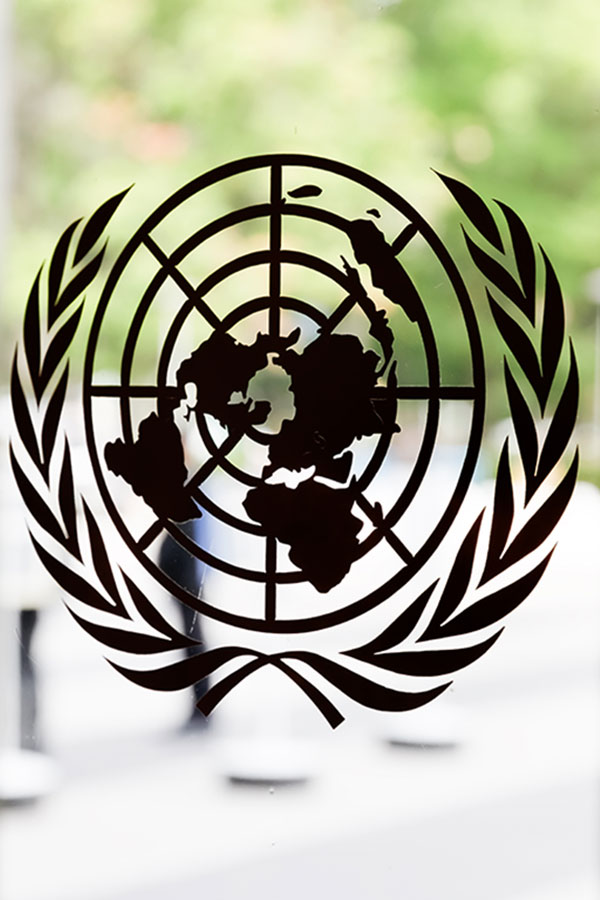UNFCCC
Global Response to Climate ChangeInternational Negotiations
Background
The United Nations Framework Convention on Climate Change (UNFCCC) provides the foundation for international cooperation on climate change. The UNFCCCs Kyoto Protocol allocates emissions assigned amounts for developed countries over the period from 2008 to 2012.
Australia has been a significant contributor to the work of the UNFCCC since its formation in 1992, and AIGN acknowledges the importance of its Framework in providing a forum for the international community to formulate common actions to combat the effects of climate change.
It is of vital importance for appropriate long term investment in transitioning to a low carbon environment that there be a long term universal climate agreement based on common commitments across members.
Under the Cancun Agreements, 89 countries have made pledges to limit their greenhouse gas emissions. These countries, which include the United States, China, India, the European Union, Brazil and Australia, represent over 80% of global emissions. The pledged targets are in line with stabilising concentrations of greenhouse gasses between 550 ppm CO2-e and 450 ppm CO2-e by 2100.
Australia's commitment under the Cancun Agreements is to reduce net emissions by 5% below 2000 levels by 2020 irrespective of global action on climate change, with conditional net emissions reduction of up to 15% or 25% depending on the extent of global action.
Discussions had been underway within the UNFCCC on developing a new International Climate Agreement at the Paris Committee Of Parties (COP) meeting in December 2015. This Agreement was to replace the Kyoto Protocol and determine what will be the level of commitments by members to reduce their emissions post 2020. Debate over the nature of the agreement had been at the forefront of recent annual COP meetings.
The Paris COP 21 represented the culmination of a four-year negotiating round to the U.N. Framework Convention on Climate Change (UNFCCC) launched with the Durban Platform for Enhanced Action adopted at COP 17 in 2011. The Durban Platform called for protocol, another legal instrument or an agreed outcome with legal force under the Convention applicable to all Parties, to apply from 2020.
Paris Agreement
AIGN welcomes the signing of the Paris Agreement in December 2015 and the aim to keep the rise of global temperatures this century well below 2 degrees Celsius of preindustrial levels. Signed by 198 countries it is the first comprehensive global treaty to combat climate change. The Paris Agreement articulates two ambitious long-term emission goals: a peaking of emissions "as soon as possible" (with a recognition that it will take longer for developing countries) and for a balance to be reached between the rate of greenhouse gas emissions and the removal of these gases from the atmosphere (referred to as zero net emissions) by some time between 2050 and 2100.
A key to this outcome was that in contrast to the previous tops down approach the Paris Agreement reflects a "hybrid" approach blending bottom-up flexibility, to achieve broad participation, with top-down rules, to promote accountability and ambition.
Prior to COP 21, 160 parties submitted interim high-level policy plans setting out their approach to reducing emissions and contributing to the global goal of below 2 degrees covering 94% of global emissions. These Intended Nationally Determined Contributions (INDCs) provided a common framework for discussion at COP 21. They contained quantifiable information on the reference point for emissions reductions (including, as appropriate, a base year), time frames and/or periods for implementation, scope and coverage, planning processes, assumptions and methodological approaches and how the Party considers that its intended nationally determined contribution is fair and ambitious, in light of its national circumstances. However the levels of commitments and timeframes for implementation differ considerably with the total commitments representing a holding of global warming to a estimated 2.7 degrees celcius.
The new treaty ends the strict differentiation between developed and developing countries reflecting in part the growing share of global emissions from developing economies.
An important element of the Agreement was the Commitment placed on all countries to report regularly on their emissions and "progress made in implementing and achieving" their Nationally Determined Commitments (NDCs,) and to undergo international review. Parties are also expected to submit new NDCs every five years, with the clear expectation that they will "represent a progression" beyond previous ones.
The Paris Agreement is a treaty under international law, but only certain provisions are legally binding, partly to accommodate US concerns (where congress could disapprove a binding agreement). Therefore, if a country for instance, fails in its pledge to reduce emissions by its stated target, there will be no consequences under the Paris Agreement, provided it has shared its NDC, at 5 year intervals, and complied with the other procedural matters noted above.
Other important elements of the agreement included:
- Reaffirm the binding obligations of developed countries under the UNFCCC to support the efforts of developing countries, while for the first time encouraging voluntary contributions by developing countries too;
- Extend the current goal of mobilizing $100 billion a year in support by 2020 through 2025, with a new, higher goal to be set for the period after 2025;
- Extend a mechanism to address "loss and damage" resulting from climate change, which explicitly will not "involve or provide a basis for any liability or compensation";
- Parties may use "internationally transferred mitigation outcomes" to implement their NDCs. Require parties engaging in international emissions trading to avoid "double counting;" and
- Call for a new mechanism, similar to the Clean Development Mechanism under the Kyoto Protocol, enabling emission reductions in one country to be counted toward another country's NDC. Rules for the new mechanism are to be adopted at the first meeting of parties after the agreement takes force.
Achieving the long term objective to move to zero carbon emissions will require action from all parties in the initial absence of clauses penalizing non-action. The complexity of the follow-up steps required to translate the words of the agreement into action should not be under-estimated.


